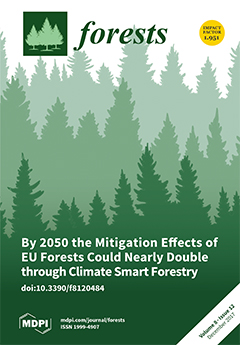Open AccessArticle
Genetic Structure and Population Demographic History of a Widespread Mangrove Plant Xylocarpus granatum J. Koenig across the Indo-West Pacific Region
by
Yuki Tomizawa, Yoshiaki Tsuda, Mohd Nazre Saleh, Alison K. S. Wee, Koji Takayama, Takashi Yamamoto, Orlex Baylen Yllano, Severino G. Salmo III, Sarawood Sungkaew, Bayu Adjie, Erwin Ardli, Monica Suleiman, Nguyen Xuan Tung, Khin Khin Soe, Kathiresan Kandasamy, Takeshi Asakawa, Yasuyuki Watano, Shigeyuki Baba and Tadashi Kajita
Cited by 18 | Viewed by 6721
Abstract
Xylocarpus granatum J. Koenig is one of the most widespread core component species of mangrove forests in the Indo-West Pacific (IWP) region, and as such is suitable for examining how genetic structure is generated across spatiotemporal scales. We evaluated the genetic structure of
[...] Read more.
Xylocarpus granatum J. Koenig is one of the most widespread core component species of mangrove forests in the Indo-West Pacific (IWP) region, and as such is suitable for examining how genetic structure is generated across spatiotemporal scales. We evaluated the genetic structure of this species using maternally inherited chloroplast (cp) and bi-parentally inherited nuclear DNA markers, with samples collected across the species range. Both cp and nuclear DNA showed generally similar patterns, revealing three genetic groups in the Indian Ocean, South China Sea (with Palau), and Oceania, respectively. The genetic diversity of the Oceania group was significantly lower, and the level of population differentiation within the Oceania group was significantly higher, than in the South China Sea group. These results revealed that in addition to the Malay Peninsula—a common land barrier for mangroves—there is a genetic barrier in an oceanic region of the West Pacific that prevents gene flow among populations. Moreover, demographic inference suggested that these patterns were generated in relation to sea level changes during the last glacial period and the emergence of Sahul Shelf which lied northwest of Australia. We propose that the three genetic groups should be considered independent conservation units, and that the Oceania group has a higher conservation priority.
Full article
►▼
Show Figures





